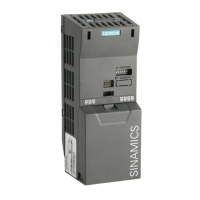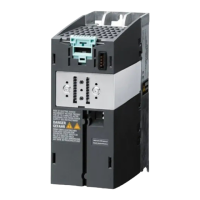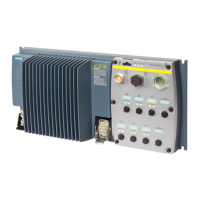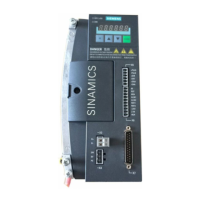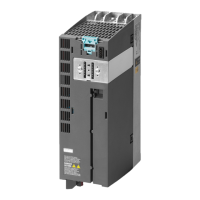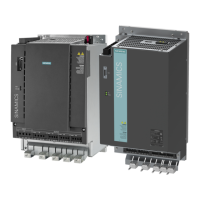Functions, monitoring, and protective functions
9.2 Drive functions
Inverter chassis units
Operating Instructions, 07/2016, A5E00331449A
405
p3820
Friction characteristic, value n0
...
p3839
Friction characteristic, value M9
r3840
Friction characteristic status w
ord
r3841
Friction characteristic, output
p3842
Activate friction characteristic
p3843
Friction characteristic smoothing time friction moment difference
p3844
Friction characteristic number changeover point at the top
p3845
Activate friction character
istic plot
p3846
Friction characteristic plot ramp
-up/ramp-down time
p3847
Friction characteristic plot warm
-up period
Armature short-circuit braking, DC braking
9.2.9.1
The "External armature short-circuit" function for permanent-magnet synchronous motors
initiates an external contactor which short-circuits the motor via resistors when the pulses
are canceled. This reduces the kinetic energy of the motor.
The "Internal armature short-circuit braking" function for permanent-magnet synchronous
motors short-circuits a half-bridge in the power unit to control the motor power consumption,
thus braking the motor.
The "DC braking" function for induction motors injects direct current into the motor, thus
braking the motor.
External armature short-circuit braking
Description
External armature short-circuit braking is only available for synchronous motors. It is used
preferably when braking in a hazardous situation, if controlled braking via the drive is no
longer possible (for example, in the event of a power failure, an EMERGENCY OFF, etc.) or
if no regenerative infeed is used. In this case, the motor stator windings are short-circuited
via external braking resistors. This means that an additional resistance is inserted in the
motor circuit that supports reducing the kinetic energy of the motor.
The external armature short circuit is activated via p1231 = 1 (with contactor feedback
signal) or p1231 = 2 (without contactor feedback signal). It is initiated when the pulses are
canceled.
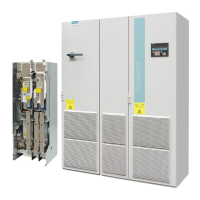
